#Federico II Hohenstaufen
Text
Estatua ecuestre de San Fernando (Sevilla)
Hoy vamos a tratar un monumento especial: el realizado en honor del rey Fernando III el Santo, hoy en la llamada Plaza Nueva en el barrio del Arenal, distrito Casco Antiguo, con la disposición que se ve en la foto anterior.
Continue reading Estatua ecuestre de San Fernando (Sevilla)

View On WordPress


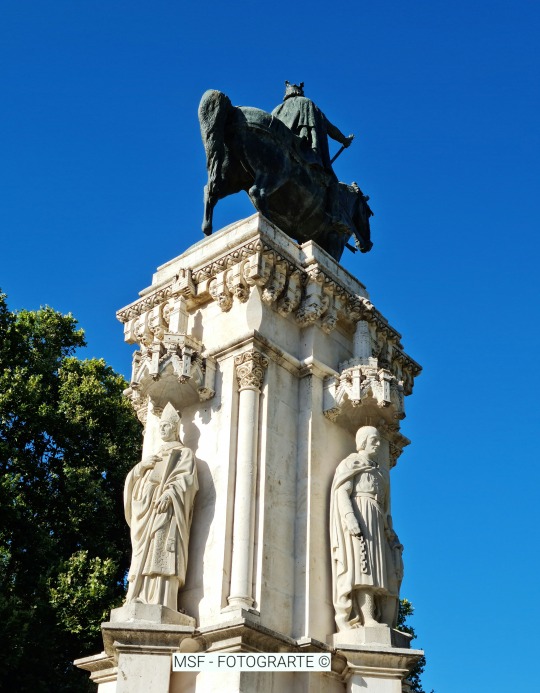

#Alfonso López Rodríguez#Alfonso X el Sabio#Beatriz de Suabia#Doña Inés Rodríguez de Girón#Don Remondo o Raimundo de Losana#Enrique Pérez Comendador#Escultura#Escultura civil#Federico II Hohenstaufen#Felipe de Castilla#Fernando III el Santo#Garci Pérez de Vargas#Joaquín Bilbao#Joaquín Sánchez Cid#Lafita Díaz#Ramón de Bonifaz#Sevilla
0 notes
Text
Volti dei tre anziani della Cattedrale di Termoli

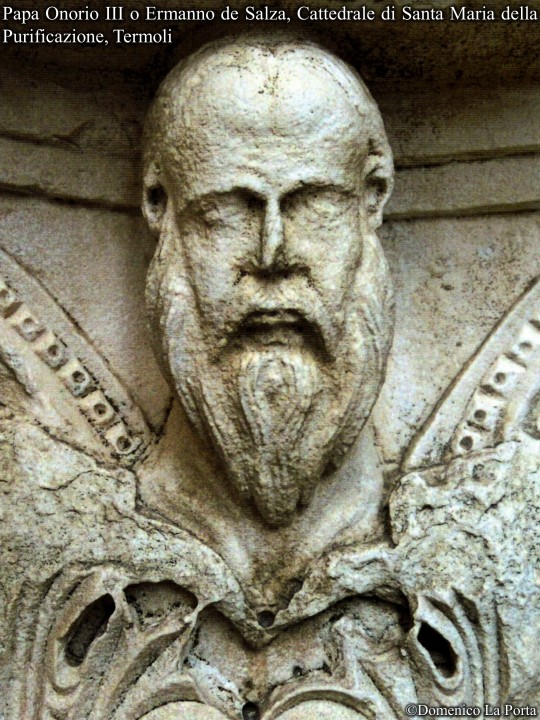

Nel lato sinistro del capitello, il consigliere e giurista di Federico II, Pier delle Vigne, mentre nel lato destro abbiamo il secondo giurista più vicino all'imperatore, Taddeo da Sessa, e nel centro, un anziano dalla lunga barba ed il volto malinconico o dolente, identificabile come il pontefice Onorio III, magister regis dell'infante Federico, oppure il terzo più importante consigliere di quest'ultimo, il gran maestro teutonico Ermanno de Salza.
Cattedrale di Santa Maria della Purificazione, Termoli (CB), prima metà del XIII secolo (1225-1235), secondo capitello del lato sinistro della facciata principale.
#storia#molise#italia#termoli#medioevo#archeologia#arte#cultura#federico ii#federico ii di svevia#italy#frederick ii#hohenstaufen#papa Onorio III#Onorio III#Ermanno de Salza#Hermann Von Salza#Pier delle Vigne#Taddeo da Sessa#art#medieval art#13th century#medieval europe#normanni#svevi#romanico#architettura#storia dell'arte#architecture#cattedrale
4 notes
·
View notes
Text
I’m reading again Ernst Kantorowicz biography about Emperor Frederick II Hohenstaufen and I happened in one of my favourite parts, the one dedicated of course to Pier delle Vigne.

This is so huge (to me) because the author here is describing Frederick and Pier basically as the “You Don`t Know Him Like I Do 😤 “ trope to each other.
(But also: the image of a ruler and of his closest collaborator that works so good together that their plural ideas became easily one, that after eight centuries the outcomes of their partnership is still considered indivisible, you can’t understand when one finish and the other one starts etc etc).
#pier delle vigne#pier/federico#federico ii#emperor frederick ii#Frederick II Hohenstaufen#pier della vigna#Ernst Kantorowicz#King Manfred’s letters in della Vigna’s style disclose a painful discrepancy#girl?#ah yes sometimes is forgotten but after his death Pier delle Vigne was still considered a traitor BUT his style and works#were transmitted by his pupils and students - many of them remembered him fondly like Nicola da Rocca which after the fall of the Hohenstauf#dinasty saved the papers of his old master and that's to him that we have a lot of Pier de#delle Vigne surviving work#italian history#sicilian history#medieval history#13th century
9 notes
·
View notes
Text
I need a fic with young Frederick II the Great (king of Prussia) being possessed by his great-great-great… -grandfather Frederick II Hohenstaufen (Holy Roman Emperor), since Frederick II (the Prussian one) is a descendant of Frederick II (the Medieval one) through Constance of Sicily, daughter of Manfred, who is a son of Frederick II Hohenstaufen.
Just imagine: 28-year-old Frederick, the new king of Prussia, doing his best to make Prussia a European superpower, patronising the arts, all in all being a king we don’t deserve.
And Frederick II who is bored with being silently dead, so he decides to be loudly dead and starts possessing his descendant every day, giving him advice on ruling the country, discussing why Voltaire is a great philosopher and just annoying young Frederick because why not.
#middle ages#duke’s jokes#federico ii#frederick ii#hohenstaufen#hohenzollern#kingdom of prussia#frederick the great#fanfic
49 notes
·
View notes
Photo



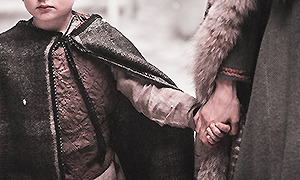
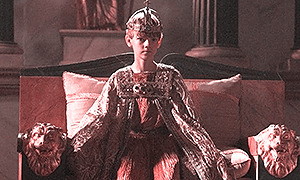

May 17th 1198. A 4 years-old Federico II Hohenstaufen is crowned King of Sicily
Soon after the death of the Emperor Henry, Constance had the child fetched from Foligno by an Apulian count and brought to Sicily. Dressed in widow’s weeds she awaited her son in Palermo. There were grave accusatory rumours against the Empress current at the time: some said she had poisoned her husband, and it was a matter of common knowledge that she had no love for Germans. The suspicion of murder was unjust, but the hatred for Germans ascribed to her was genuine enough; she shared it with her Sicilian fellow-countrymen and with the Italians oppressed by the Roman Curia. The foundations of this hate were the same then as they have always been: the arrogance "allied with unwisdom" of the Germans alienated the Mediterranean peoples, as did their "obstinacy and self-assertiveness."
Their physical strength and their savagery moreover terrified the Southerners, the discords prevailing amongst themselves brought them scorn and contempt. For rulers of the world they appeared "crude, coarse and uncivilised,” while their yet unpolished language seemed to the Romans "like the barking of dogs and the croaking of frogs." But the main factor in this hate was fear; fear of the inrush "of the winter and the storm into the rose-gardens of Sicily." This fear was not allayed by the savagely cruel treatment meted out to the Sicilians by Henry VI. Perhaps Innocent with his biblical phraseology hit on the right description of the German visitation of those days when he wrote: "Because the people of Sicily and the other inhabitants of this kingdom have grown effeminate in sloth, and undisciplined through too much peace, and, boasting themselves of their wealth, have given themselves over to the unbridled lusts of the body, their stink has gone up to heaven and the multitude of their sins has delivered them into the hands of the oppressor."
Innocent spoke thus out of no friendliness to the Germans. The hate of Germans that flamed up throughout Italy on the death of the Emperor had been carefully nurtured beforehand by the Curia, had been given the air of a national pan-Italian movement and utilised as a means to shake off the imperial yoke in the south in favour of a papal Italy. In resonant periods Innocent III had taken pains to stir up and foster this hate: "The wrath of the North wind whistles through the mountains with a new quaking of the earth, it drives through the level plains of Apulia, whirling dust into the eyes of wanderers and country-dwellers." Thus he wrote about the German,Henry VI, whom Dante also designated "that loud blast which blew the second over Swabia’s realm." A reaction of this sort against the tyranny of Henry VI was of course inevitable. The importance of the movement in Sicily was enhanced by the fact that the Empress Constance took part in it. Her motives were probably personal, for Henry had made a terrific clearance amongst all related to the old Norman royal house and had banished the survivors to Germany. On his death Constance immediately resumed the sovereignty of her hereditary domain, in accordance both with the Emperor’s instructions and with the right she herself possessed as Norman Queen. But the new ruler of Sicily was Norman Queen only: not widowed Empress; and the first act of her reign was to banish from her kingdom the Emperor’s interpreter, Markward of Anweiler, and with him all other German notables, a considerable number of whom held fief and office in the Norman territory. The pretext was that they might prove dangerous to the peace and quiet of the kingdom,especially Markward, who had not been slow to propose himself as vicegerent. Her next step was to imprison the Sicilian Chancellor, Walter of Palear, Bishop of Troia, who had been from of old an opponent of the Norman dynasty and a willing tool of the German Emperor. The intervention of the Pope was necessary to effect the liberation of the Bishop Chancellor and his re-instatement in his former offices. AntiGerman feeling in the south was so acute that the first German crusaders who were returning, all unsuspecting, from the Holy Land were surprised and plundered by the excited Sicilians, and after that the home-coming pilgrims had to avoid the har bours of this dangerously inhospitable kingdom. Curiously, the German princes who were on the Crusade, when they received in Acre the news of their Emperor’s death, reconfirmed the choice of Frederick as King of the Romans.
Constance, however, deliberately shut her eyes to all this. Her hate of Germany reinforced the maternal anxiety which heroes’ mothers are wont to suffer from: in the German crown she saw a never-ending series of future perils and struggles for her son. She would as far as possible ward off such a danger from him. Frederick should be king of the wealthy Sicily, and in the southern Land of Dreams he would quietly forget the imperial dignity of his fathers. A few months after the boy’s arrival in Palermo she had him crowned King of Sicily. The solemn rite was celebrated on Whit Sunday 1198, with a pomp and ceremony borrowed from the Byzantine court, while in accordance with ancient custom the people greeted their newly crowned king with the cry which may still be read on every crucifix in southern Italy "Christus vincit, Christus regnat, Christus imperat." It is significant to note that this is also the motto engraved on Frederick’s early seals. From that day Constance omitted from all official documents of the young king the title that had previously figured there: Rex Romanorum. From henceforth Frederick of Hohenstaufen was to content himself with the many titles borne by the reges felices of Norman stock. He was to be, body and soul, the son of the Sicilian Constance only, and to be kept aloof from all the fatal, unknown consequences in which the dangerous Hohenstaufen blood of his father might involve him. One is reminded of the childhood of Achilles or of Parzival.
Kantorowicz Ernst, Frederick II. 1198-1250, p. 13-16
#women#history#historicwomendaily#women in history#historical women#costanza i#Federico II#House of Hauteville#House of Hohenstaufen#norman swabian sicily#people of sicily#women of sicily#Palermo#province of palermo#yeah i know i was supposed to post it yesterday orz#you go constance coco
40 notes
·
View notes
Text

Napoli - Francesco Laurana - Maschio Angioino - Arco trionfale - 1479
Fondata dai Greci di Cuma, i sovrani che nei secoli si sono susseguiti sul trono di Napoli sono stati:
i Normanni:
- Ruggero I d’Altavilla conquistò la Sicilia nel 1091;
- Ruggero II (1130 - 1154): fu il primo re di una Sicilia multietnica e multireligiosa avendo accorpato in un unico regno tutti i possedimenti normanni nell’Italia Meridionale conquistando Napoli nel 1137;
- Guglielmo I (1154 - 1166)
- Guglielmo II (1166 - 1189): eresse il Duomo di Monreale;
- Tancredi (1189 - 1194)
- Guglielmo III (1194)
- Costanza d’Altavilla (1194 - 1197)
gli Svevi:
- Federico II (1198 - 1250) Stupor Mundi: a Napoli istituì l’università nel 1224;
- Corrado (1250 - 1254): dovette confrontarsi con il potere del fratellastro Manfredi;
- Corradino (1254 - 1258): fu sconfitto nella battaglia di Tagliacozzo e fatto imprigionare a Castel dell’Ovo e decapitare da Carlo d’Angiò nella piazza del mercato a Napoli, poi sepolto nella vicina Chiesa del Carmine. La dinastia degli Svevi scomparve con la morte di Manfredi nel 1266.
gli Angioini:
- Carlo I (1266 - 1285): fratello di Luigi IX il Re Santo, Conte d’Anjou, ricevette in vassallaggio la Sicilia e Napoli dal Papa che difese dagli Hohenstaufen. Edificò il Maschio Angioino, con uno stile che richiama il castello di Avignone, nel 1282;
- Carlo II (1285 - 1309): dovette rinunciare al trono di Sicilia dopo la rivolta dei Vespri Siciliani nel 1302;
- Roberto I (1309 - 1343): figlio di Maria d’Ungheria sepolta nella Chiesa di Donnaregina, fu apprezzato da Petrarca e amante della cultura e delle lettere;
- Giovanna I (1343 - 1382): fu fatta assassinare dal ramo di Durazzo degli angioini e le succedette
- Carlo (1382 - 1386)
- Ladislao (1386 - 1414)
- Giovanna II (1414 - 1435)
- Renato I (1435 - 1442)
gli Aragonesi:
- Alfonso I d’Aragona (1442 - 1458): sconfisse Renato d’Angiò e unì il tono di Napoli a quello di Sicilia e ai possedimenti della Sardegna e della Spagna occidentale. Combattè contro Milano e Genova e dotò il Maschio Angioino dell’attuale arco di trionfo;
- Ferdinando I detto Ferrante (1458 - 1494): all’inizio del suo regno dovette fronteggiare la rivolta angioina e successivamente sedò la rivolta dei baroni e si alleò con gli Sforza contro il re di Francia Carlo VIII d’Angiò. Del suo tempo la Chiesa del Gesù Nuovo;
- Alfonso II: sposò Ippolita Maria Sforza, ma dovette abdicare a causa della calata di Carlo VIII;
- Ferrandino (1494 - 1496)
- Federico I (1496 - 1503) durante il cui regno vi fu la conquista e poi la cacciata di Luigi XII re di Francia;
- Ferdinando III (1504 - 1516) dopo il quale il Regno di Napoli fu incluso in quello di Spagna prima sotto la casata degli Asburgo (con la breve parentesi della Repubblica di Masaniello fra il 1647 e il 1648) poi sotto quella dei Borbone (1700 - 1713) ed ancora sotto quella degli Asburgo d’Austria (1713 - 1734).
i Borboni:
- Carlo I (1734 - 1759): già Duca di Parma, conquistò e riunificò il Regno delle Due Sicilie anche grazie alla madre Elisabetta Farnese, seconda moglie del re di Spagna, che da Madrid influenzò la prima parte del suo regno. Riformò con Bernardo Tanucci l’amministrazione, promosse la musica (fondò il Teatro di San Carlo nella patria di Paisiello e Pergolesi), l’arte (promosse la ceramica di Capodimonte, fece costruire al Vanvitelli la reggia di Caserta del 1751 e quella che oggi è Piazza Dante oltre alla Reggia di Capodimonte dove installò la collezione Farnese) e sostenne gli scavi a Pompei ed Ercolano che iniziarono nel 1738);
- Ferdinando (1759 - 1799 e 1816 - 1825): sposò una figlia di Maria Teresa d’Austria, Maria Carolina che lo allontanò dall’influenza spagnola di Bernardo Tanucci, promosse la Marina Militare (nel 1787 fu fondata la Nunziatella), ma dovette subire una rivoluzione filo-francese (Eleonora Fonseca Pimentel, Mario Pagano, …) nel 1799 contrastata dal Cardinale Ruffo e da Fra Diavolo e la conquista napoleonica che insediò Giuseppe Bonaparte dal 1806 al 1808 e Gioacchino Murat dal 1808 al 1815 prima di diventare, con il Congresso di Vienna, Re delle Due Sicilie ed essere sepolto al Monastero di Santa Chiara;
- Francesco (1825 - 1830)
- Ferdinando II (1830 - 1859): fondò la prima ferrovia d’Italia (1839), ma fu reazionario e soprannominato il Re Bomba per come represse i moti rivoluzionari del 1848 a Messina;
- Francesco II (1859 - 1861): era figlio di Ferdinando II e di Maria Cristina di Savoia e sposò la sorella di Sissi, Maria Sofia di Baviera.
Con l’Unità, Napoli confluì nel Regno d’Italia: ecco perché la statua di Vittorio Emanuele II è presente a Palazzo Reale.
2 notes
·
View notes
Text

Il giorno che vorrò castigare una provincia la farò governare da un filosofo.
.
.
.
FEDERICO II DI HOHENSTAUFEN - De arte venandi cum avibus
2 notes
·
View notes
Text
Federico II riaccende rivalità tra Jesi e Ancona
Federico II Hohenstaufen, lo Stupor
Mundi, sovrano, intellettuale, politico e condottiero che lasciò
un’impronta indelebile nella storia medioevale, riaccende la
rivalità tra Jesi e Ancona, nelle Marche. L’antico “derby”,
scomparso persino dai campi di calcio, è tornato in auge
all’annuncio che Ancona organizzerà un festival intitolato al
grande svevo, senza coinvolgere la città di Jesi, dove il…
View On WordPress
0 notes
Photo

Capolavoro dell'architettura medievale, Castel del Monte fu fatto costruire da Federico II di Hohenstaufen di Svevia nel 1240. Le nostre miniature a ruba sui portali HANDMADE! 🏰💯 • • For order: 📲 whatsapp +39 3206139569 📩 [email protected] ✈️ worldwide shipping 🛒 10% sconto newsletter • • #portiamolapuglianelmondo #lafavolaincantata #WeAreinPuglia #fattoamano #bombonierefood #handmade #pugliafactory #madeinitaly #tuttofattoamano #artigianato #bonsaiulivo #creazioniartigianali #artigianatoitaliano #fattoamanoconamore #fattoconilcuore #foodbomboniere #visitpuglia #instacreazioni #instacreazioniartigianali #viamagazine #italianstories #segnapostioriginali #creazionihandmade #wellmade #segnapostipersonalizzati #blogger #creazionipersonalizzate #artigianisocialcommunity #segnaposto #maestroartigiano — view on Instagram https://ift.tt/PFC2zBq
0 notes
Text
Federico II di Svevia: la prospettiva metastorica d’Europa
Federico II di Svevia: la prospettiva metastorica d’Europa
di Andrea Virga
La ricorrenza del 26 dicembre – 826° anniversario della nascita di Federico II di Hohenstaufen, Imperatore del Sacro Romano Impero e Re di Sicilia – costituisce un’occasione per riflettere su alcuni degli aspetti più propriamente metastorici, oltre che metapolitici, del nostro discorso, a partire peraltro dal simbolo che abbiamo scelto per rappresentare il GRECE Italia.
Infatti…

View On WordPress
0 notes
Text
Federico II di Svevia, Castello di Monte San Giovanni Campano.

Opera della prima metà del XIII secolo.
#italia#medioevo#storia#archeologia#arte#cultura#federico ii#federico ii di svevia#Monte San Giovanni Campano#frederick ii#hohenstaufen#svevia#italy#history#storia dell'arte#art#medieval art#13th century#architettura#architecture
3 notes
·
View notes
Text
En 1945 Kurt se encontraba en misión al sur de Italia, en la región de Apulia, asiento del Castillo Octogonal del Emperador Federico II Hohenstaufen, para detectar y recuperar un importante objeto: La Piedra de Gengis Khan.
https://open.spotify.com/episode/0RLJc4MtpetF2UC9mTYoAm?si=CPn0gXI7TLKmJ1Pm_5v5uw

1 note
·
View note
Text
Well, none of my friends wanted to listen my endless gibberish about High Middle Ages, so my bro advised me to create a tumblr blog.
So, yeah, now you will have to listen to my stupid historical jokes. Good luck.
What will be here?
Well, mainly:
• European history in general
• European Middle Ages (history, culture and other stuff)
And if you want a more precise list:
• Hohenstaufen family
• Especially about Friedrich II
• France vs England because it’s classic
• Kingdom of Bohemia and HRE in general
• Charles IV (Charles of Luxembourg) because he’s gorgeous
• “The Divine Comedy” by Dante Alighieri
• Medici family
• Niccolo Machiavelli because he is gorgeous as well
• Lot’s of random stuff about Medieval Italy
• And be prepared for lot’s of silly jokes on these topics
"Feci quod potui faciant meliora potentes"
© Probably said by someone very long time ago, quoted by me 2000 years after
About the paintings I used:
Profile image: Portrait of Giotto, detail from “Five Famous Men of the Florentine Renaissance” by unknown author
Profile heading: “The Court of Emperor Frederick II in Palermo” by Arthur von Ramberg
#middle ages#europe#european history#history#holy roman empire#dante alighieri#the divine comedy#machiavelli#Medici#Hohenstaufen#federico ii#Duke’s jokes
18 notes
·
View notes
Text

- E lo princep respos al almirall: -Ques aço que vos volets que yo hi faça? que si fer yo puch , -volenters ho fare.- Yo , dix lalmirall , quem façats ades venir la filla del rey Manfre, germana de madona la regina Darago, que vos tenits en vostra preso aci el castell del Hou , ab aquelles dones e donzelles qui soes bi sien ; e quem façats lo castell e la vila Discle retre . - E lo princep respos , queu faria volenters. E tantost trames un seu cavaller en terra ab un leny armat, e amena madona la infanta , germana de madona la regina , ab quatre donzelles e dues dones viudes. E lalmirall reebe les ab gran goig e ab gran alegre , e ajenollas, e besa la ma a madona la infanta.
Ramon Muntaner, CRÓNICA CATALANA, p. 221
Beatrice was born (probably) in Palermo around 1260. She was the first child and only daughter of Manfredi I of Sicily and his second wife, the Epirote princess Helena Angelina Doukaina (“[…] et idem helenam despoti regis emathie filiam sibi matrimonialiter coppulavit, ex quibus nata fuit Beatrix.”, Bartholomaeus de Neocastro, Historia Sicula, in Giuseppe Del Re, Cronisti e Scrittori sincroni Napoletani editi ed inediti, p. 419). It’s quite plausible the baby had been named after Manfredi’s first wife, Beatrice of Savoy (mother of Costanza, who will later become Queen consort of Aragon and co-regnant of Sicily). The little princess would soon be followed by three brothers: Enrico, Federico and Enzo (also called Anselmo or Azzolino). With three sons, Manfredi must have thought his succession was secured.
Beatrice’s father was one Federico II of Sicily’s many illegitimate children, although born from his most beloved mistress (and possibly fourth and last wife), Bianca Lancia. Since his father’s death in 1250, Manfredi had governed the Kingdom of Sicily on behalf firstly of his (legitimate) half-brother Corrado and, after his death in 1254, of Corrado’s son, Corradino. In 1258, two years prior Beatrice’s birth, Manfredi had been crowned King of Sicily in Palermo’s Cathedral, de facto usurping his half-nephew’s rights.
Like it had happened with Federico, Manfredi was soon opposed by the Papacy, which didn’t approve of the Hohenstaufen’s rule over Sicily (and Southern Italy with it) and the role of the King as the champion of the Ghibellines faction. In 1263, Urban VI managed to convince Charles of Anjou, younger brother of Louis IX the Saint, to present himself as a contender to the Sicilian throne. Three years later, on January 6th 1266, the French duke was crowned King of Sicily by the Pope in Rome, thus overthrowing Manfredi. On February 26th, in Benevento, the usurped King then tried to get back his kingdom by facing Charles in the open field, but failed and lost his life while fighting.
The now widowed Queen Helena had previously fled to Lucera (in Apulia) with her children (Beatrice was now six), her sister-in-law Costanza, and her step-daughter, the illegitimate Flordelis, where she thought they would be safer. When they got news of the disaster of Benevento and Manfredi’s death, they fled to Trani from where they planned to set off to Epirus. The unfortunate party was instead betrayed and handed off to the Angevin. On March 6th night, Helena and the children were taken hostage and later separated. The Queen was sent at first to Lagopesole (in Basilicata) and finally to Nocera Christianorum (now Nocera Inferiore), where she would die still in captivity in 1271.
Enrico, Federico and Enzo were taken to Castel del Monte. Following Corradino’s death in 1268, Manfredi’s young sons (the oldest, Enrico, was just four at the time of his capture) were, to all effects, the rightful heirs to the Sicilian throne. It’s undoubtful Charles must have wanted them gone, or at least forgotten. In 1300 they were moved to Naples, in Castel dell’Ovo (which, at that time, was called San Salvatore a mare), under the order of the new Angevin king, Charles II. According to some sources, Federico and Enzo died there within the short span of a year. As for Enrico, he died alone and miserable in October 1318, he was 56.
As for Beatrice, her fate was more merciful compared to that of her mother and brothers and, for that, she had to thank her sex, which made her harmless in Charles’ eyes (as long as she was left unmarried). After being separated from her family (she will never see them again), the six years old princess was, like her brothers, held captive (although not together) in Castel del Monte. In 1271, she was moved to Naples, in Castel dell’Ovo, under the guardianship of its keeper, a French nobleman called either Landolfo or Radolfo Ytolant. Manfredi’s daughter is mentioned in a rescript of Charles dated March 5th 1272, from which we learn she had been granted at least a maid (“V Marcii xv indictionis. Neapoli. Scriptum est Iustitiario et erario Terre laboris etc. Cum ex computo facto per magistrum rationalem Nicolaum Buccellum etc. cum Landulfo milite castellano castri nostri Salvatoris ad mare de Neapoli pro expensis filie quondam Manfridi Principis Tarentini et damicelle sue. ac filie quondam comitis Iordani et damicelle sue dicto castellano in unc. auri novem et taren. sex de pecunia presentis generalis subventionis residuorum quolibet vel qua canque alia etc. persolvatis. non obstante etc. Recepturus etc.”, Monumenti n. XLIV. in Domenico Forges Davanzati, Dissertazione sulla seconda moglie del re Manfredi e su’ loro figliuoli, p. XLIII-XLIV). Like it had happened with her mother, and unlike her brothers, it appears Beatrice was treated with courtesy and respect. In her misfortune, she could count on the company of a fellow prisoner and distant relative, the daughter of Giordano Lancia d’Agliano, who was her grandmother Bianca Lancia’s cousin and had been a loyal supporter of her father, Manfredi.
On Easter Day of 1282, an anti-Angevin rebellion sparkled in Palermo would soon transform itself into a war to get rid of the so much hated Frenchmen, the so-called War of the Sicilian Vespers. It’s dubious that, close in her prison, Beatrice came to know about it. She might have also been surprised to know that her half-sister, Costanza, had been asked by a delegation of fellow Sicilians to take possession of what was hers by right (the throne) as she was their “naturalis domina”. Her rights were shared with her husband, Pedro III of Aragon, who would personally take part in the war and be rewarded with a joint coronation in November 1282.
For Beatrice, everything changed in 1284. On June 4th, Italian Admiral Ruggero di Lauria, at the service of the Aragonese King (he was also Costanza’s milk brother), defeated the Angevin fleet just offshore from Naples and took Carlo II prisoner. Being in clear superiority, the Sicilians could now demand (among many requests) the release of Princess Beatrice. Carlo’s eldest son and heir, Carlo Martello Prince of Salerno, could nothing other than obliging them. (“Siciliani autem , & omnes faventes Petro Aragonum, incontinenti de ipsorum victoria plurimum exultantes, Nuncios, & Legatos ad quoddam Castrum ex parte Principis direxerunt , ubi quaedam filia quondam Domini Regis Manfredi sub custodia tenebatur , ut dicta filia fine ullo remedio laxaretur , quae statim fuit antedictis Legatis , & Nunciis restituta.”, Anonimo Regiense, Memoriale Potestatum Regiensium. Gestorumque iis Temporibus. Ab anno 1154 usque ad Annum 1290, in Ludovico Antonio Muratori, Rerum Italicarum scriptores ab anno aerae christianae quingentesimo ad millesimumquingentesimum, vol. VIII, p. 1158).
Beatrice, finally free, left Castel dell’Ovo headed for Capri, where the Admiral was waiting for her. She had spent 18 long years in captivity and was now 24. From Capri she reached Sicily, where she was warmly welcomed and with a lot of enthusiasm, to meet her half-sister Costanza.
As the Queen’s closest free relative (both Pedro and Costanza had no interest in asking for Enrico’s release since, as a male, he had more rights than Costanza to inherit the throne), Beatrice had a great political value. At first, Ranieri Della Gherardesca’s name came up. He was the son of that Count Gherardo who had fought together with the unfortunate Corradino (the sisters’ royal cousin), and for that had been beheaded in Naples in 1268 alongside his liege. Finally the perfect candidate was found. Manfredo of Saluzzo was born in 1262 and was the son of Marquis Tommaso I and his wife Luigia of Ceva. Like Beatrice, Manfredo was strongly related to Costanza, specifically, he was her nephew since Tommaso and the Sicilian Queen were half-siblings (they were both Beatrice of Savoy’s children).
The marriage contract between the two is dated July 3rd 1286 and the contracting parties are on one side “la serenissima signora constanza regina dy aragon e dy sicilia e dil ducato de puglia principato di capua” and, on the other side “il marchexe thomas di sa lucio signore de conio una cum mạdona alexia soa moglie”. Tommaso declares that Manfredi will inherit his title, privileges and possession upon his death. If, after the marriage is celebrated, Manfredi were to die first, Beatrice would enjoy possession of the castle and some properties. The Marquise Luisa declares to agree with her husband’s decision (“[…] e a tuto questo la marchexa aloysia madre dy manfredo consenty”, Gioffredo Della Chiesa, Cronaca di Saluzzo, p. 165-166). The union was formally celebrated the year after.
Beatrice bore Manfredi two children: Caterina and Federico, born presumably in 1287 (“Et da questa beatrix haue uno figlolo chiamato fredericho et una figlola chiamata Kterina” Gioffredo Della Chiesa, Cronaca di Saluzzo, p. 185). In 1296 Tommaso died, so Manfredi inherited the marquisate and Beatrice became Marquise consort of Saluzzo. She will die eleven years later at 47, on November 19th 1307 (“Venne a morte nel dì 19 novembre di quest’anno Beatrice di Sicilia moglie del nostro marchese Manfredo, e noi ne accertiamo il segnato giorno col mezzo del rituale del monastero di Revello , nel quale leggesi annotato: 19 novembris anniversarium d. Beatricis filiae quondam d. Manfredi regis Ceciliae et uxoris d. Manfredi primogeniti d. Thomae marchionis Saluciarum, quae huic monasterio quingen- tas untias in suo testamento legavit.” Delfino Muletti, Memorie storico-diplomatiche appartenenti alla città ed ai marchesi di Saluzzo, vol III, p. 76). Her husband would quickly remarry with Isabella Doria, daughter of Genoese patricians Bernabò Doria and Eleonora Fieschi. Isabella would give birth to five more children: Manfredi, Bonifacio, Teodoro, Violante and Eleonora.
As of Beatrice’s children, Caterina would marry Guglielmo Enganna, Lord of Barge (“Catherina figlola dy manfredo e de la prima moglie fu sorella dy padre e dy madre dy fede rico e fu moglie duno missere gulielmo ingana capo dy parte gebellina in questy cartiery dil pie monty verso bargie.”, Gioffredo Della Chiesa, Cronaca di Saluzzo, p. 256). Federico’s fate would be more complicated. Like many mothers before and after her, Isabella Doria wished to see her own firstborn, Manfredi, succeeded his father rather than her step-son. The new Marchioness of Saluzzo successfully instigated her husband against his son to the point the Marquis. in a donatio mortis causa dated 1325, disinherited Federico in favour of the second son (Federico would have settled with just his late mother’s belongings), Manfredi (“Et questo faceua a instigatione de la moglie che lo infestaua a cossi fare.” Gioffredo Della Chiesa, Cronaca di Saluzzo, p. 224). Federico’s natural rights were later acknowledged by an arbitral award proclaimed in 1329 by his paternal uncles Giovanni and Giorgio of Saluzzo, and finally, an arbitration verdict dated 1334 and issued by Guglielmo Earl of Biandrate and Aimone of Savoy. As a condition of peace, the future Marquis should have granted his younger brother the castle and villa of Cardè as a fief. Stung by this defeat, Manfredi IV, his wife Isabella and beloved son Manfredi retired to Cortemilla. Federico died in 1336 and was succeeded by his son Tommaso, who would inherit his father’s rights and feud with the two Manfredi's. After being defeated by his half-uncle in 1341 (the older Manfredi, his grandfather, had died the year before), resulting in losing his titles, possessions and freedom, Tommaso would later regain what was of his right and rule as Marquis of Saluzzo.
Sources
-ANONIMO REGIENSE, Memoriale Potestatum Regiensium. Gestorumque iis Temporibus. Ab anno 1154 usque ad Annum 1290, in Ludovico Antonio Muratori, Rerum Italicarum scriptores ab anno aerae christianae quingentesimo ad millesimumquingentesimum, vol. VIII
-BARTHOLOMAEUS DE NEOCASTRO, Historia Sicula, in Giuseppe Del Re, Cronisti e Scrittori sincroni Napoletani editi ed inediti
- DEL GIUDICE GIUSEPPE, La famiglia di Re Manfredi
- DELLA CHIESA, GIOFFREDO, Cronaca di Saluzzo
-FORGES DAVANZATI, DOMENICO, Dissertazione sulla seconda moglie del re Manfredi e su’ loro figliuoli
- LANCIA, MANFREDI, Il complicato matrimonio di Beatrice di Sicilia
-Monferrato. Saluzzo
-MULETTI, DELFINO, Memorie storico-diplomatiche appartenenti alla città ed ai marchesi di Saluzzo, vol II-III
- MUNTANER, RAMON, Crónica catalana
- SABA MALASPINA, Rerum Sicularum
- SAVIO, CARLO FEDELE, Cardè. Cenni storici (1207-1922)
-Sicily/Naples: Counts & Kings
#women#history#women in history#historical women#history of women#beatrice of sicily#manfredi i#helena angelina doukaina#costanza ii#manfredi iv of saluzzo#federico of saluzzo#caterina of saluzzo#House of Hohenstaufen#norman swabian sicily#aragonese-spanish sicily#house of saluzzo#people of sicily#women of sicily#myedit#historyedit
45 notes
·
View notes
Text
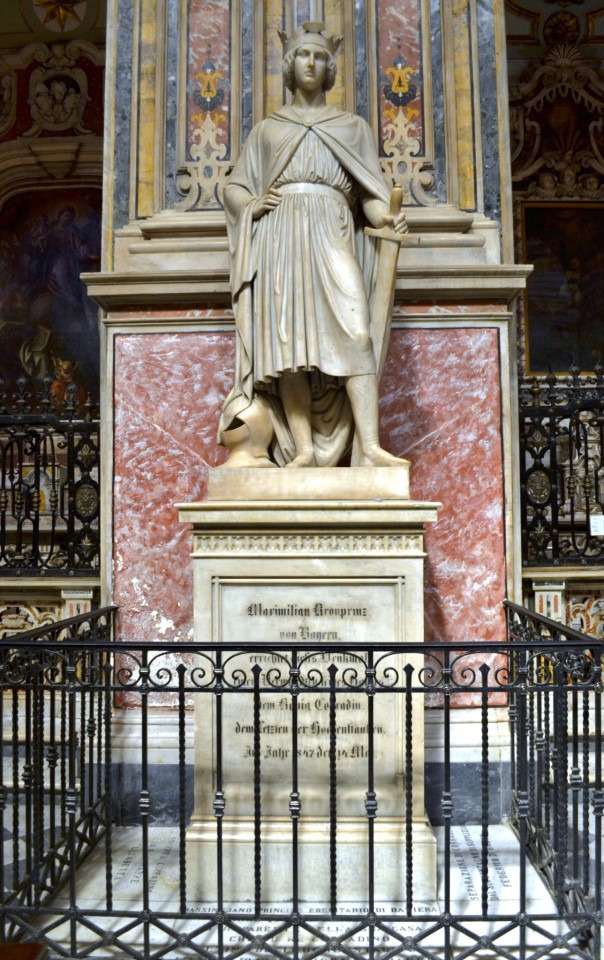
Bertel Thorvaldsen, Sepolcro di Corradino di Svevia (1847), Basilica di Santa Maria del Carmine Maggiore, Napoli.
#bertel thorvaldsen#neoclassicismo#napoli#naples#naples italy#campania#sud italia#arte#art history#art#scultura#scultpure#Corradino di Svevia#Hohenstaufen#Federico II
84 notes
·
View notes
Text
Here’s a few gems about Frederick II Hohenstaufen (aka Federico II) from Dan Jones’s book Crusaders:
Frederick was a truly extraordinary individual. He was not physically imposing: the Damascene preacher and historian Sibt Ibn al-Jawzi described him as red-faced, bald and shortsighted. “Had he been a slave, he would not have been worth two hundred dirhams,” Ibn al-Jawzi muttered. But what he lacked in hair and distance vision, Frederick amply made up for in the strength of his personality, breadth of his knowledge and extent of his imperial ambition.
Frederick gets excommunicated for postponing his crusade for the fourth time, but goes to Jerusalem anyway:
By the beginning of September Frederick was in Acre, preparing to throw himself into reorganizing the defenses of the kingdom. Yet his presence, although long anticipated, was now not universally welcomed. An excommunicate crusader was a contradiction in terms, and throughout Frederick’s time in the East he faced simmering hostility from the Templars—who refused to deploy troops any closer than a mile from his army—and the patriarch of Jerusalem, Gerold of Lausanne, who regarded Frederick as the devil incarnate.
Relationships between Frederick and sultan al-Kamil:
Frederick sent al-Kamil a set of his own armor as a token of his peaceful intentions, and the sultan graciously allowed Frederick to submit a list of difficult mathematical problems for the consideration of the finest scholars at the Ayyubid court. To the everlasting scandal and outrage of Patriarch Gerold, al-Kamil also sent to the emperor’s camp “dancing girls who sang and juggled.” Gerold complained that “the emperor lived and dressed totally like a Saracen, feasting and drinking with these dancers. . . . The emperor’s generosity to the Saracens was extreme, as though he was trying to buy the peace he was not able to obtain by force or fear.”
Frederick manages to peacefully regain Jerusalem for the crusaders:
On March 18 a triumphant (if still excommunicate) Frederick Hohenstaufen made his way into the Church of the Holy Sepulchre—the first Christian king to set foot there since Guy of Lusignan before the battle of Hattin in 1187. The crown of Jerusalem was waiting for him on the high altar. As he described the event to Henry III of England: “We, as being a catholic emperor... wore the crown, which Almighty God provided for us from the throne of his Majesty.” He did not add that he had in fact snatched it from the altar himself and placed it on his own head, forgoing any ritual of anointing or consecration.
Concluding remarks:
In total he was excommunicated four times between 1227 and his own death in 1250
Legends only
8 notes
·
View notes